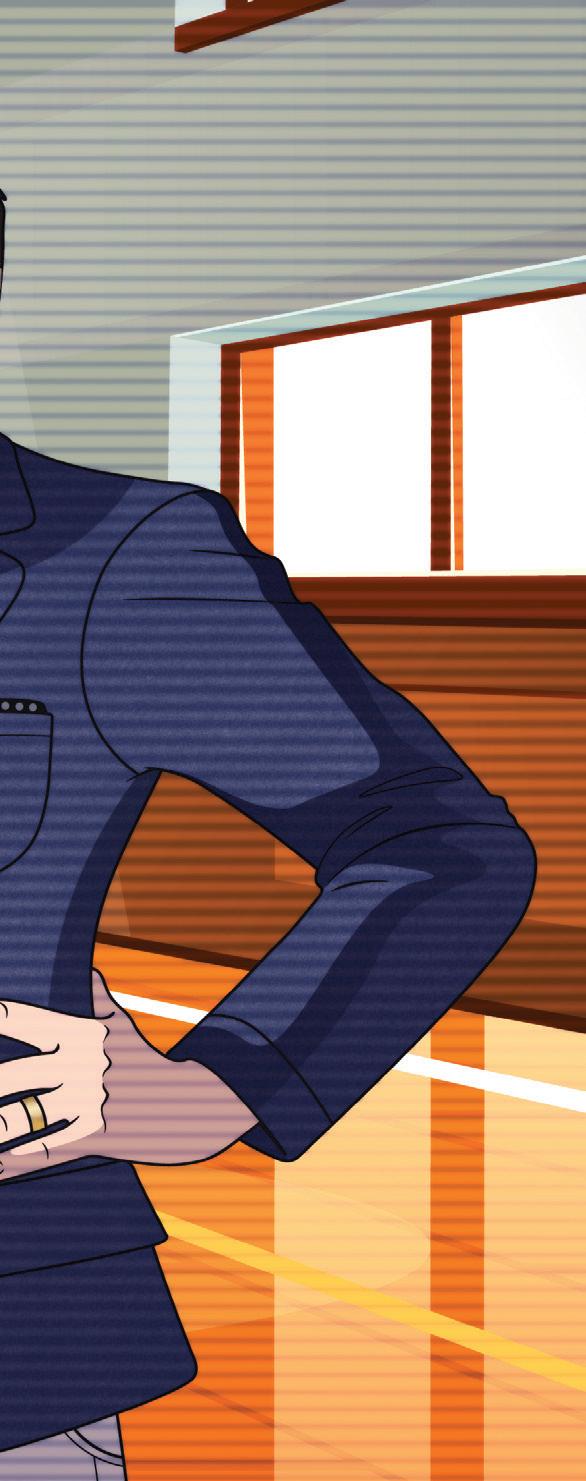
2 minute read
JUDGEMENT RENDERED2D in
by Manny Rea
issues involved in these incidents. He and the designers at COIP then spent a year creating a first-of-its-kind class using dialogue scripts, video editing, voice overs and animation.
Advertisement
The class features live lecture content followed by a case study featuring the animated characters. Students are then asked to answer questions based on the perspectives of the characters and previous material on the legislation, regulations and standards that apply to the situation.
A mock trial follows, and students build or answer complaint files, attend depositions and then hear motions — just as if they were to go to trial in real life. The newly developed animated storytelling is designed to flesh out the emotions of the people involved on both sides of the case and to ultimately help students determine who is responsible for the accident based on industry standards.
A case study Avery uses is that of a high school basketball player who is left a quadriplegic after running and slipping into a gymnasium wall behind the court baseline. Students must consider the perspectives and roles of coaches, referees and facility managers in contributing to the conditions that caused the injury and ask questions like who oversaw the waxing of the floors that made it too slippery or who approved him to play in worn-out tennis shoes? And who designed the unpadded walls to be so close to the baseline?
“I wanted students to step out of themselves and step into someone else’s shoes to gain perspective on how our decisions impact others in these venues," says Avery. "We don’t want to continue to make the same mistakes and create hazardous environments.”
When the redesigned course first rolled out last fall, Avery was watching for how the new approach would impact the students. What he saw was that their responses to the case studies he presented were often reflective of his own.
As Avery has had real-life involvement in the case studies, he realized his own biases were showing in his lecture. He decided to take a more neutral approach and let the animated segments do the talking. While slow at first, he felt that more and more students broadened their understanding and empathy as they engaged further with the material.
“At the beginning of the semester, they'd have very strong opinions about why certain groups of people or individuals in certain settings should or should not have done things — end of story,” he said. “At the end of it, they realized it is more complex. Using perspective, there’s no right or wrong answer in some situations, and that’s what I really wanted them to walk away with.”
The class has moved into its second offering and is allowing more students to peer into the world of legal aspects for entertainment and sports with the continued guidance of cartoon Avery.
“My family has told me I’m very animated and that I’m a character but never in a million years would have thought myself as an animated character,” Avery laughed. “My wife called me the ‘Mr. Frizzle of Risk Management.’”

